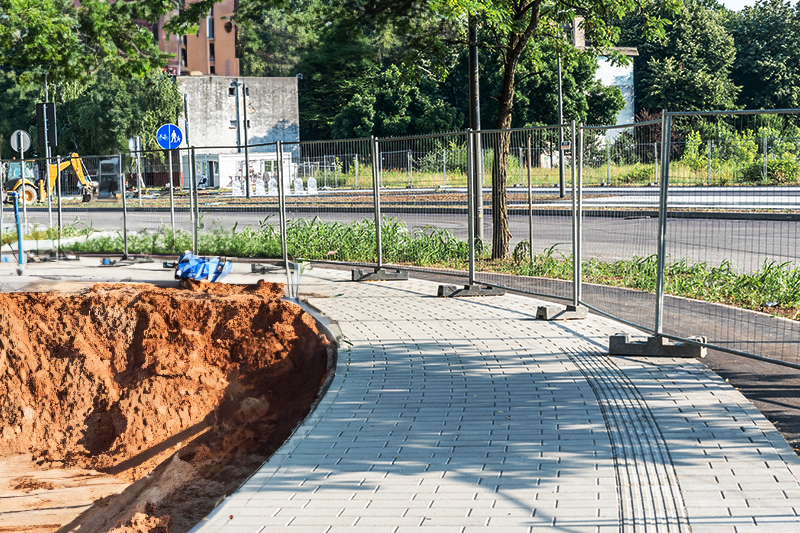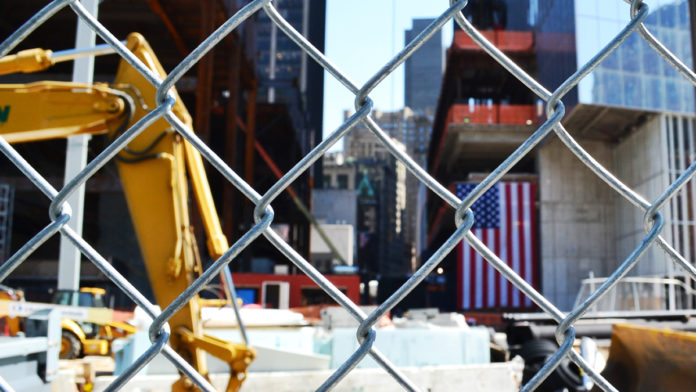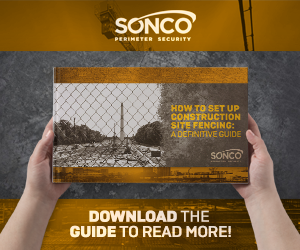Temporary fence panels offer versatility that permanent fencing does not. They can be moved from site to site, reconfigured as needed, and stored when not in use. While this flexibility has its benefits, it also presents some drawbacks, primarily in terms of stability and security.
An unstable fence is an unsecured fence, so stability must be a priority. Wind, terrain, and other factors can cause temporary fence panels to lean or fall over, making the perimeter easier for trespassers to penetrate. This can be a serious liability because regardless of how a person accesses your site, it leaves that area vulnerable to theft, vandalism, and personal injury.
Whether a person goes over the fence, finds an access space between panels, or gets through because of a downed panel, the result and risk are still the same. The potential legal and financial ramifications are substantial.
There are several accessories that can increase the security of temporary fencing and make it more stable.
Following are some of the most effective temporary fence ideas that you can put to use on your own site.
Anti-climb fence
Even a stabilized temporary fence panel can be scaled, allowing access to the site. Perimeter security products like anti-climb fencing reduces that risk by making it difficult for potential intruders attempting to go over the fence to gain a foothold.
Often these types of fence panels are designed to deter climbing and cutting. They are available in different gauges and panel heights so you can choose the type that best fits your needs. They can still be anchored like standard temporary fencing and are compatible with most temporary fence accessories like screens and sensors.
How does anti-climb fence work?
The main feature that makes anti-climbing fencing so secure is its sturdier construction. The key element to this is its small aperture mesh, welded securely to prevent bending. Unlike standard wire mesh fencing, this tight configuration makes it very hard for intruders to gain a foothold.
Due to the welded nature of the mesh and its minimized open spaces, hands or feet can’t fit through, effectively deterring climbing attempts.
Some temporary and permanent chain-link fences typically feature interconnected wires that allow for some flexibility, making them easier to climb. By contrast, anti-climb welding fencing addresses this vulnerability by ensuring the mesh remains rigid and impenetrable.
Fence-sensors
Fence sensors are a broad technology, but the intent is to deter or prevent a perimeter breach. They detect intrusion or attempted intrusion and, based on the type used, initiate a number of responses. Some of the more common types of fence sensors include:
- Motion-activated floodlights
- Microphonic cable
- Vibration sensors
- Security cameras
- Passive infrared sensors
- Fiber optic cable
- Electrified fences
- Microwave sensors
- Active infrared sensors
Some of these sensors detect movement in the area around the fence while others detect movement on the fence such as vibrations caused by cutting or climbing.
How do Fence sensors work?
Depending on the type of sensor used, the sensor effectively turns the fence into a smart fence. The technology is often connected to an app that the user can use to monitor the area.
Many include cameras so the user can see exactly what is going on, but some sensors trigger floodlights or alarms, and may not include cameras.
While fence sensors are in theory a good idea for improving perimeter security, many of them can be prone to false alarms due to animals, passersby, and even the wind. If the sensors are not precisely set and the fence is not stabilized, it can result in the system sending alerts when there is no real threat.

Weighted bases for temporary fence
A temporary, removable fence does not typically have highly secure base. Usually, it is enough to keep the fence panel upright in most situations if there is no stress applied to the fence, such as high wind or consistent street vibrations.
Many users choose fence stands and add weights, like sandbags, to stabilize their temporary fences.
The problem is sandbags shift and rupture very easily. The best stabilizers to use for temporary fencing are the innovative Anchor Stands, Anchor Weights, Anchor Blocks, or Fence Braces – or some combination of the four.
Anchor Stand
Tube stands are often used for temporary fencing and if the stability is never tested it might be OK. However, it is extremely rare that the fence will never be stressed in some way, whether a strong wind comes along, or an unauthorized person tries to move it. This can lead to not only security breaches, but injury as well.
If a metal tube stand is not stored or transported correctly, it can easily become bent and broken. To repair it, you would have to take it back to the store and have it welded back together, a most impractical solution.
Anchor Stand bases offer a low-profile, high visibility solution that is far superior to conventional tube stands. They can be reused, moved, and stored which makes them a wise investment. You can also combine them with other anchor products like weights to increase the fence’s stability and security even further.
Anchor Weight
This is a superior alternative to sandbags. It is low profile but offers high visibility to reduce the risk of trips and falls. The Anchor Weight keeps the fence in place and helps to prevent it from falling.
They are easy to transport and store. There’s no mess or chance that they will break, unlike sandbags. They can be reused again and again, which increases your return on investment. They are sturdy and durable, keeping your temporary fencing where you put it and keeping it upright to increase the security of your perimeter.
Anchor Block
Concrete blocks are a common, cheap method that some people use to keep their temporary fencing upright. They will often soak up water, and fall apart, or freeze and become very hard to handle. The problem is, concrete blocks are not designed for supporting a temp fence, and this means that they are prone to failure.
And when the concrete blocks fail, so does your fence.
Anchor Blocks are the equivalent of 20 concrete blocks. They are designed specifically for temporary fencing, so every feature is intended to keep the fence as secure as possible. It is a two-in-one solution, working as the fence stand and weight.
It’s a safer, more reliable, high-visibility alternative to other fence weight methods, and it reduces liability because it was made for this job and this job alone.
Fortifying Temporary Fences
Panel fence and safety fence need to be secure, whether you’re protecting a job site or your own home renovation. Accidents can happen and you have a responsibility to keep your area as secure as you possibly can.
Using anti-climb fencing, sensors, and Anchor Bases are all good ways to increase the security of your perimeter and stabilize your temporary fencing.
There are a lot of things you can do with temporary fencing and so many things to know when you are using it to secure an area. You can learn more about fence panels, temporary fencing addons and accessories, and best practices for increased security as well as stability by accessing this extensive knowledge base.




